#孔雀 KUJAKU
Text

KUJAKU 孔雀
ザナドゥー
監督・脚本・撮影=クリストファー・ドイル/出演=浅野忠信、ケビン・シャーロック、シュー・メイチン、クリスタ・ヒューズ
#KUJAKU#孔雀#孔雀 KUJAKU#AWAY WITH WORDS#christopher doyle#クリストファー・ドイル#tadanobu asano#浅野忠信#anamon#古本屋あなもん#あなもん#movie pamphlet#映画パンフレット
20 notes
·
View notes
Text
youtube
【Mega Drive | Genesis】 Kujakuou 2: Geneijou / Mystic Defender | 孔雀王2 幻影城 ~Intro / Title / Attract demo
// Music: Tarnya / Chikako Kamatani | 鎌谷千佳子
// MiSTer FPGA // MegaDrive Nuked-MD core // Y/C Composite // Sony KV-13TR20 CRT
0 notes
Text
Doumeki's Tattoo (chapter 51)
Apologies if just the title is a spoiler (I tried with the tags 😭), but I wanted to share my speculative information on Doumeki's tattoo, so folks outside discord could see it too.
As most folks know, Yakuza sometimes get elaborate tattoos called irezumi, usually on the back and arms, which mark them out as outsiders from society. I'm not going to go into the techniques and history here, that stuff is easy to find with a search of course. I'm just going to look at the content of the tattoo.
Source: my useless college degree, and my irl pals in the tattoo industry.
First I'll add: "Doumeki has a secret tattoo" was definitely something speculated by the fandom. Good job, everyone. 👍
We don't get to see a complete image of Doumeki's new ink, we only see a couple flashes under his shirt, and one larger panel of the "reveal". It's basically a swirl of motifs (you can find people posting it on the terrible-bluebird-site if you haven't seen). I think it's shown this way because Yashiro wouldn't really "see" any specific image or theme, and would only see a mishmash of typical fancy Yakuza-esque motifs. That's the point between our boys, of course, since it "proves" Doumeki is a "real" Yakuza and can never go back to "normal" life.
The motifs we see are:
• a long thin snake or dragon
• peacock feathers
• edges of swirling robes on a (maybe feminine?) humanoid
• a lotus
With a traditional irezumi tattoo, the image choice is somewhat picked by the artist, and then discussed with the recipient. (I think the idea is they're supposed to be "inspired" by the "sense" of the individual.) Normally, Yakuza want images that enhance their tough-guy image, of course. Buddhist themes, along with other traditional cultural symbols like koi, sakura, and samurai, are very typical choices for tattoos.
• The lotus is a standard symbol in Buddhist images. Many Buddhist deities are depicted either sitting on or holding a lotus.
• Dragons are of course common for tattoos, and would be appropriate for a tough-guy, but we don't see any claws/horns/heads etc here, plus the body is very long and thin. Therefore I think this is a snake and not a dragon. There are various uses of Buddhist snake symbols.
• Robes would of course indicate a Buddhist deity if the rest of the theme is Buddhist, as opposed to some other humanoid like a samurai or kabuki figure. Some readers felt there was a feminine quality to the figure though maybe that's hard to tell.
• Peacock feathers are the most interesting point here. They are indeed a symbol used in Buddhist art. Naturally we all expected bird themes for Saezuru. But specifically peacock ones really narrow down the image, I think.
My conclusion is this tattoo features Kujaku Myōō (孔雀明王), known as Mahamayuri in Sanskrit. She is a Wisdom King, a class of protective deities, and she is generally depicted as female. She rides a peacock and holds a feather in one hand, and a lotus in another (and other symbolic objects). Peacocks eat snakes, and therefore symbolize protection from poison, both literal and spiritual. Kujaku Myōō is invoked for the removal of poison and pain.
Interestingly, most Wisdom Kings are depicted in "wrathful" aspect, looking like angry demons; Fudō Myōō is a popular deity in Japan and would be a very typical tattoo choice, especially for a tough-guy. But Kujaku Myōō is always shown in "merciful" aspect with a peaceful loving face.
All of this is very interesting to consider for Doumeki. It's perfectly possible that Doumeki himself would not actually be familiar with any of this symbolic meaning, and not be intending to mean anything in particular outside "I'm a dedicated Yakuza". It's also possible that Yoneda-sensei also doesn't mean anything so specific, but only picked the motifs for more vague reasons ("peacocks are birds"). We'll have to wait to see as the plot unfolds. But even as a happy accident, we have a great symbol for Doumeki, don't we?
(I'll also note, there seems to be a hiccup in the timeline. Doumeki's back was partly revealed several chapters ago and there was no tattoo. But not enough time has passed realistically to get such a large one. So either (a) they didn't know how long tattoos actually take to get, or (b) they forgot to draw it on that panel. A mistake either way, but let's just pretend we didn't see it, okay?)
#spoilers#saezuru spoilers#saezuru tori wa habatakanai#twittering birds never fly#saezuru chapter 51#yakuza tattoos#irezumi#BL manga
106 notes
·
View notes
Text
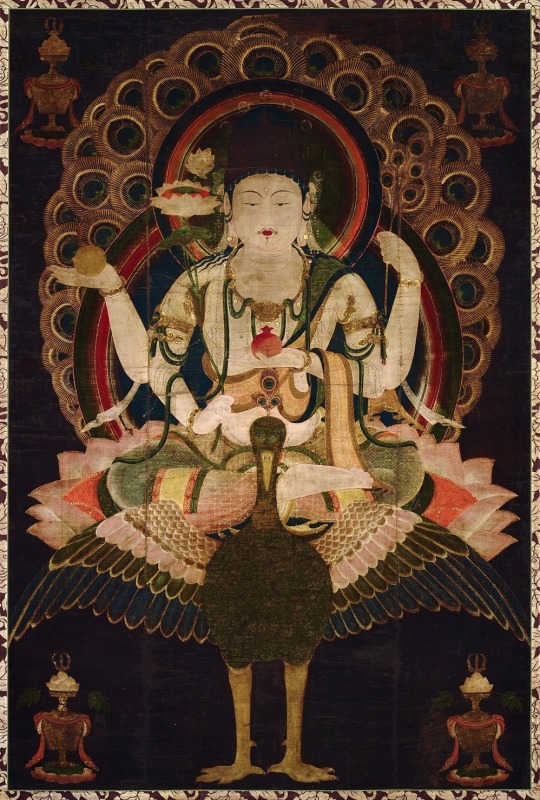

Kujaku Myōō (Mahamayuri) 絹本著色孔雀明王像, Heian period (794-1185), 12th century
3 notes
·
View notes
Photo

羽団扇楓『舞孔雀』[Hauchiwakaede "Maikujaku"]
Acer japonicum 'Parsonsii'
羽団扇[Hauchiwa] : Fan made of feathers
楓[Kaede] : Acer
舞[Mai] : Dancing
孔雀[Kujaku] : Peacock
https://www.youtube.com/watch?v=wbNMvRVAMIU
7 notes
·
View notes
Text
Let’s go for another round of obtuse Kanji names, this time with Lunalights. The archetype’s Japanese name is ムーンライト, Moonlight, written in Katakana. The archetype’s Kanji name is 月光, Gekko(u), which means Moonlight. It is literally the combination of Getsu (moon), and ko (light). The Kanji 光, ko, can also be spelled hikari, and it is the Kanji name of LIGHT Attribute, which is the Attribute of Lunalight Pendulum Monsters.
The Katakana, Moonlight, alludes to the OP of Sailor Moon animé, Moonlight Densetsu, since this archetype is inspired by Sailor Moon. The Kanji, Gekko, alludes to Moonlit Papillon, one of Droite’s cards, whose Deck is also an inspiration to Lunalights (and whom I speculate was intended to be in ARC-V for this reason). It also likely refers to Gekkou no Diana, an old shojo manga.
**Lunalight Blue Cat’s Katakana name is ムーンライト・ブルー・キャット, Moonlight Blue Cat, and the Kanji name is 月光蒼猫, Gekko Aoi Neko, Moonlight Blue Cat. 蒼, Aoi, means blue (though can also mean green), and 猫, neko means cat.
**Lunalight Purple Butterfly’s Katakana name is ムーンライト・パープル・バタフライ, Moonlight Purple Butterfly, and its Kanji name is 月光紫蝶, Gekko Murasaki Cho. The Kanji 紫, murasaki, which refers to red-root gromwell, the natural dye which gives the color purple (in Japanese, purple color is called murasaki-iro, murasaki color). It can also colloquially mean woman. 蝶, cho, literally means insect (as we discussed before), but this specific Kanji is used for butterflies.
**Lunalight White Rabbit’’s Katakana name is ムーンライト・ホワイト・ラビット, Moonlight White Rabbit, and its Kanji name is 月光白兎, Gekko Hakuto. 白兎, Hakuto, can refer to white rabbit, or Echigo hare with its winter fur specifically. 白, shiro, means white, but also has connotations with innocence. 兎, usagi, means rabbit.
**Lunalight Black Sheep’s Katakana name is ムーンライト・ブラック・シープ, Moonlight Black Sheep, and its Kanji name is 月光黒羊, Gekko Kuro Hitsuji. 黒, kuro, literally means black, but is also has connotations with guilt. 羊, hitsuji means sheep.
Note: Due to historical allusions of Shiro with White Magic Alignment, and Kuro with Dark Magic Alignment, and existing contrasting allusions of both Kanji to innocence/guilt, the two cards are likely meant to be counterparts of each other.
**Lunalight Wolf’s Katakana name is ムーンライト・ウルフ, Moonlight Wolf. Its Kanji name is 月光狼, Gekko Okami. 狼, okami, means wolf, but literal etymology comes from oo+kami, ie. great god.
**Lunalight Tiger’s Katakana name is ムーンライト・タイガー, Moonlight Tiger. Its Kanji name is 月光虎, Gekko Tora. 虎, Tora means tiger.
**Lunalight Cat Dancer’s Katakana name is ムーンライト・キャット・ダンサー, Moonlight Cat Dancer. Its Kanji name is 月光舞猫姫, Gekko Mai Neko Hime, Moonlight Dancing Cat Princess. 舞, mai, can mean dance, flit, circle, or wheel, or refer to the Mai Dance (this is where Lunalight Fusions’ Design come from). 猫, neko, is the same as above. 姫, hime, means princess, concubine, or woman, though this Kanji is generally used as Princess in Yu-Gi-Oh!. It is the same Hime Kanji as in Melodious Songstress/Maestra monsters.
Note: Due to repeating Kanji, Lunalight Cat Dancer is explicitly meant to be the Fusion form of Blue Cat.
Note 2: Mai Kanji is the same as in Mai Kujaku’s name, 孔雀 舞, Kujaku Mai (Dancing Peacock), so this is a deliberate allusion to Mai.
**Lunalight Panther Dancer’s Katakana name is ムーンライト・パンサー・ダンサー, Moonlight Panther Dancer. Its Kanji name is 月光舞豹姫, Gekko Mai Hyo Hime, which means Moonlight Dancing Leopard Princess. 豹, hyo, means panther, though it also alludes to Windwitches’ Hyo (Ice) Kanji.
**Lunalight Leo Dancer’s Katakana name is ムーンライト・ライオ・ダンサー, Moonlight Lio Dancer. Its Kanji name is 月光舞獅子姫, Gekko Mai Shisha Hime, which means Moonlight Dancing Lion Princess. 獅子, Shishi, can mean Lion, though it can also mean:
Synonym of ライオン (raion, “lion”) (big cat Panthera leo)
(by extension from the notion of lions being "kings") the Buddha, a Buddha
short for 獅子舞 (shishimai), a traditional Chinese lion dance
short for 獅子頭 (shishigashira), the lion mask traditionally worn for the lion dance
short for 除夜の獅子 (joya no shishi, “New Year's lion”), a person dressed in costume as for a lion dance who goes door to door begging on New Year's Eve
a guardian statue commonly found outside temples and shrines, often with a komainu statue, the tradition for which is said to have come over from the Korean peninsula
This explains the masks Leo Dancer wears on its knees. The Kanji, 獅, shi, means lion. 子, shi, generally means child, but can also mean midnight, among other things. In original Chinese, shishi basically means small lion, though they might be going for the midnight meaning here.
**Lunalight Reincarnation Dance’s Katakana name is ムーンライト・��ンカネーション・ダンス, Moonlight Reincarnation Dance. Its Kanji name is 月光輪廻舞踊, Gekko Rinne Buyo. 輪廻, rinne, means reincarnation, but can refer to attachment, or a repetitive cycle in general (Yes, this is where Rinnegan from Naruto comes from). 舞踊, buyo, means dance, but generally refers to the Buyo Dances.
The Kanji, 輪, rin, can mean cycle, or flower. Of course this also alludes Rin, and Yuzu’s element, En Flowers.
The Kanji 廻, ne, can mean round, revolve, go around, or circumference. So rinne, revolving cycle, or revolving flowers.
The Kanji 舞, bu, is the same as the mai Kanji as above. Bu is just an alternative spelling.
The Kanji 踊, yo, means to dance, or to jump around.
**Lunalight Crimson Fox’s Katakana name is ムーンライト・クリムゾン・フォックス, Moonlight Crimson Fox. Its Kanji name is 月光紅狐, Gekko Beni Kitsune, Moonlight Crimson Fox. The Kanji 紅, beni, can refer to crimson, or safflower, which is the origin of the color. It also other meanings, including lipstick, or woman. 狐, kitsune, means fox, but also refers to kitsune.
**Luna Light Perfume’s Kanji name is 月光香, and its Hiragana spelling is Gekkouga. The Kanji 香, ka, by itself means fragrance, or incense, but here it is likely the short form of 香水, kosui, perfurme. Ga is not a used spelling of the Kanji. The card here is likely alluding to the transformation items from Pretty Cure, which are perfumes, though artwork is closer to trinkets from Sailor Moon.
Note: Because of the lack of the forced Katakana, this card is not part of the Lunalight archetype. It is merely a support card.
**Lunalight Kaleido Chick’s Katakana name is ムーンライト・カレイド・チック, Moonlight Kaleido Chick. Its Kanji name is 月光彩雛, Gekko Ayahina. The Kanji 彩, aya, means coloring. The Kanji 雛, hina, can mean chick, or colloquially youngling. It also refers to a specific doll
a type of small doll, typically standing upright in the Heian period, changing style to a seated posture in the Muromachi period
Though we’ll go with Moonlight Coloring Chick.
The Aya Kanji is used is various cards, but most notably used in Sky Iris, and Double Iris Magician. The Kaleido part of the Katakana name is another allusion to Mai, this time Elegant Egoist (まんげきょう-かれいなるぶんしん-/
万華鏡-華麗なる分身-, Mangekyō - kareinaru bunshin, Kaleidoscope -A splendid alter ego-).
**Lunalight Yellow Marten’s Katakana name is ムーンライト・イエロー・マーテン, Moonlight Yellow Marten. Its Kanji name is 月光黄鼬, Gekko Ki Itachi, Moonlight Yellow Weasel. The Kanji 黄, ki, means yellow. The Kanji 鼬, itachi, means weasel, but it alludes to kamaitachi, which itself alludes to Shingo’s Yosenju monsters.
(Kiitachi Kanji also means Siberian Weasel in Chinese.)
**Lunalight Emerald Bird’s Katakana name is ムーンライト・エメラルド・バード, Moonlight Emerald Bird. Its Kanji name is 月光翠鳥, Gekko Suicho. The Kanji 翠, sui, means green specifically. The Kanji 鳥, cho, is the standard Kanji for bird.
(Suicho Kanji also means Kingfisher in Chinese.)
**Lunalight Sabre Dancer’s Katakana name is ムーンライト・サーベル・ダンサー, Moonlight Saber Dancer. Its Kanji name is 月光舞剣虎姫, Gekko Buken Tora Hime, Moonlight Dancing Sword Tiger Princess. The Kanji, 舞, bu, is the same as above.剣, ken, means sword, though specifically refers to double-edged sword. It can also mean swordsmanship, bayonet, or in entomology, a stinger, or ovipositor. Though in Yu-Gi-Oh!, it is the standard Kanji for sword. The Kanji 虎, tora, is the same as above. Same goes for Hime.
Note: This card’s name is a pun on sabretooth tiger, but because of the Tora Kanji this card is meant to be the Fusion form of Lunalight Tiger specifically.
**Lunalight Serenade Dance’s Katakana name is ムーンライト・セレナード・ダンス, Moonlight Serenade Dance. Its Kanji name is 月光小夜曲舞踊, Gekko Sayokyoku Buyo. 小夜曲, which can be read as Sayokyoku, or Shoyakyoku, means serenade. Sayokyoku is a combination of sayo (night), and kyoku (song). The Kanji 小, sa/sho, means small. The Kanji 夜, yo/ya, means night. The Kanji 曲, kyoku, means song, or a piece of music. It can also mean bent, curve, to turn, to twist, or crooked. Buyo Kanji is the same as above.
The Katakana name of this card contains セレナ, Serena, which alludes to Serena, and Serenade the Melodious Diva (Japanese name: げんそうのおとめセレナ/幻奏の音女セレナ, Genso no Otojo, Serena, Serena the Melodious Diva). It also contains the Kanji 夜, ya, which indirectly alludes to Yuya.
**Lunalight Fusion's Katakana name is ムーンライト・フュージョン, Moonlight Fusion. The Kanji name is 月光融合, Gekko Yugo, Moonlight Fusion. The Kanji 融, yu, means dissolver, or melt, and 合, go, can mean fit, suit, join, or one tenth. Here, joining meaning is used. The Kanji for 融合, yugo, is probably better translated as amalgamation, since the term was historically used in Chinese for amalgamating metals, though current official localization, Polymerization, is not wrong.
***
A bit of addendums:
**The Lunalight archetype superficially alludes to Asuka’s Fusion Cyber Girls (NOT Cyber Angels, very important), which themselves are based off Mai’s Amazoness cards. A lot of the Kanji cut the middleman out, though, and directly allude to Mai herself.
***The actual Kanji allusions to Droite’s Butterspies might not just be because Lunalights are seductress assasins, but also because they were meant to be a Chaos archetype (use LIGHT and DARK), but neither archetype is well developed enough to utilize this idea. Tsukikage’s Twilight Ninjas are in a similar situation.
***The both this theme, and the original Cyber Girls are also allusions to old Ritual Card, Performance of Sword.
***Going by the “Hime” naming in the Fusion Cards, the implication seems to be that Lunalight were going to work alongside Melodious cards, but this never materialized. Much like how the “so” (instrument playing) Kanji in Melodious was likely originally intended for Equip Spells, as that archetype is more closely based off various GX cards, but specifically Judai, and Edo’s cards.
**The Lunalight monsters have the half mask thing Odd-Eyes variants have, though otherwise the archetype is more closely alludes to Starving Venom variants visually. It may be symbolic, but considering Katsumi Ono’s design principles in 5D’s, half mask design seems to be something he likes.
***Main Deck monsters have Crescents in the background, but Fusion monsters have Full Moon.
**The archetype’s DARK Beast-Warrior statlines allude to Barrett’s monsters (Panther Warrior, and Pitch-Black Warwolf), though they are likely based off Leopard Girl, a video-game only card from the old Konami games.
**This archetype is the only notable one in Yu-Gi-Oh! with a female monster in masculine outfit (Lunalight Black Sheep), but also a woman’s blazer (Lunalight Crimson Fox). This is obviously meant to allude to Serena’s orientation towards women, much like how Yuri’s cards are meant to give off hermaphoriditic vibe a la Yubel (and by proxy Judai).
**The allusions to Mai Dance, and Buyo Dance means this archetype’s dancing theme is specifically meant to be narrative/theatrical dances. This ties into ARC-V’s theming of acting, or performing as playing (the “Yu”, in Yu-Gi-Oh!).
**I’m not going over the symbolism of each card, but the tl;dr is:
***The Fusion climbing gimmick of the Lunalight archetype is a mixture of Jim’s Fossils, and Judai’s (particularly earlier) Elemental HEROes.
***The Lunalights have the multi-attack on monsters gimmick of Judai’s earlier monsters, which carry over to Cyber Angels (and by proxy to Melodious cards, specifically Bloom Prima), and Yuya’s Odd-Eyes Fusions.
***The field invasion gimmick of Serenade Dance is explicitly based off Manjoume’s Ojamas, which Yuri hates, as Lunalights originally used Ojama Token generating cards for their OTK strategy.
**Serena’s Deck has allusions to all Bracelet Gİrls, but Yuzu stands out in particular, because the color Kanji uses plants, but also because of their common theming (dances vs. music). Though the original intention was clearly to have Serena to parallel Yuya (theatrical dance vs. circus performance), and Yuri parallel Yuzu (cannibal flowers vs. flower singers), since they are the morally darker counterparts of the protagonist duo, back when Yuzu was the deuteragonist of course.
**A lot of the Kanji used in Lunalights can colloquially allude to women, or prostitutes. So we are literally doing the virgin vs. whore dichotomy here.
**Lunalights use a lot of Kanji that can allude to an animal, or its mythical counterpart. This is the standard case for many ARC-V archetypes, and not really unique to them.
Edit: Further addendums:
**The overall animal theming of the archetype might also refer to Tokyo Mew Mew.
**The general Sailor Moon aesthetic of archetype is likely a joke on how Sailor Moon is likely a joke on the term Sailor Senshi (Sailor Warrior/Soldier), and Serena being a former Fusion soldier, but also a joke on how most of the Sailor Moon villains are actually Lovecraftian entities, tying into the whole Kadath theming of ARC-V.
#shitposting#ygo random thoughts#serena arc-v#celina arc-v#lunalight#ygo kanji names#ygo katakana names#ygo arc-v meta
1 note
·
View note
Text

まだ見みぬ国くにに 住むすむという
Mada minu kuni ni sumu to iu
紅きあかきつばさの 孔雀くじゃくどり
Akaki tsubasa no kujaku dori
秘めひめし願いねがいを 知るしるという
Himeshi negai o shiru to iu
秘めひめし宝たからを 知るしるという
Himeshi takara o shiru to iu
まだ見みぬ国くには 空そらのはて
Mada minu kuni wa sora no hate
青きあおき潮しおの 海うみの底そこ
Aoki shio no umi no soko
深きふかき眠りねむりに うずもれて
Fukaki nemuri ni uzumorete
今いまもこの世よの世のよこの世このよに ありという
Ima mo konoyo ni ari to iu
まだ見みぬ国くにに 住むすむという
Mada minu kuni ni sumu to iu
紅きあかきつばさの 孔雀くじゃくどり
Akaki tsubasa no kujaku dori
秘めひめし願いねがいを 知るしるという
Himeshi negai o shiru to iu
秘めひめし宝たからを 知るしるという
Himeshi takara o shiru to iu
English translation
We hope that you guys already found what you looking for, the FULL lyric and english translation of 紅孔雀 – 井口小夜子 and some information of this Japanese song.
Let us know your favorite lyric sentences in the comment and don’t forget to bookmark this website to read a lot of song lyrics in the future.

戦国時代、那智の小四郎は、紅孔雀の秘宝のなぞを解く黄金の鍵をめぐって、元海賊の網の長者、幻術使い・信夫一角やしゃれこうべ党と戦う

0 notes
Photo

D.M.S. Simple Toys Report SHF - #真骨雕 Kameen Rider OOO Tajadol Combo Eternity D.M.S. Best Buy@2022 幪面超人 OOO #Tajadol Combo #Eternity 鷹孔鷲聯組 "永恆" - 全身以紅、黃、綠色為主,左手追加武裝「#TaJanity Spinner」。於《#假面騎士OOO 10th #復活的核心硬幣》登場。利用「TAKA ETERNITY(獵鷹永恆)」核心硬幣、「KUJAKU ETERNITY(孔雀永恆)」核心硬幣與「CONDOR ETERNITY(禿鷹永恆)」核心硬幣變身的形態。 西曆2021年,世界被混亂和恐怖包圍著。 古代 #OOO,跨越800年以後再次地復活。人類瀕臨滅絕的危機時,旅行中的 #火野映司 歸來。作為反抗者的他,與後藤慎太郎及伊達明,還有泉比奈等人攜手戰鬥。 與 #ANKH 再次相遇的「某日的明天」會實現嗎…? D.M.S. 玩味指數 Toy Scoring 外型 Look (40) 36 可動性 Articulation and Poseable (20) 15 配件及可玩性 Accessories and Gimmick (20) 14 品質管制 QC (10) 4 價錢 Price (10) 5 總分 Total Score:74 分 #DMS #ToysReport #Bandai #SHF #KamenRider #MaskedRider https://www.instagram.com/p/CmlZsB8pl7u/?igshid=NGJjMDIxMWI=
#真骨雕#tajadol#eternity#tajanity#假面騎士ooo#復活的核心硬幣#ooo#火野映司#ankh#dms#toysreport#bandai#shf#kamenrider#maskedrider
0 notes
Text
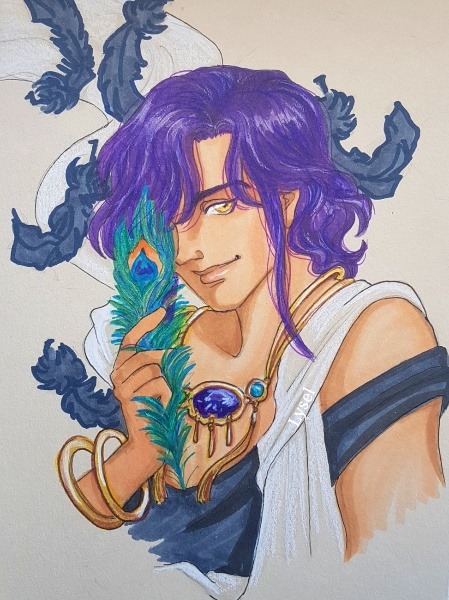
Kujaku ❤ my fave from CLAMP RG Veda.
...☕?/🖌commission
76 notes
·
View notes
Text
Spirit Warrior( Kujaku-Oh) - 1988
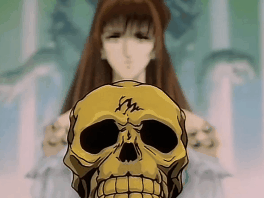
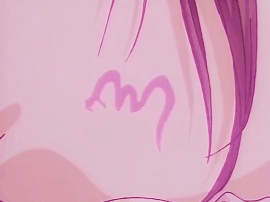
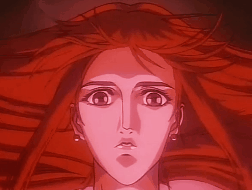
#Spirit Warrior#孔雀王 Kujaku Ou#Peacock King#Kujaku-Oh#anime#80's anime#gif animé#action#fantasy#1988-1991#supernatural#horror
26 notes
·
View notes
Text
What’s In a Motif? Part 8
On The Tenth Day of Fun I present... another addition in another series! Sorry for the graphics this time, but I’ll try to update it when I have a bit more time ^^
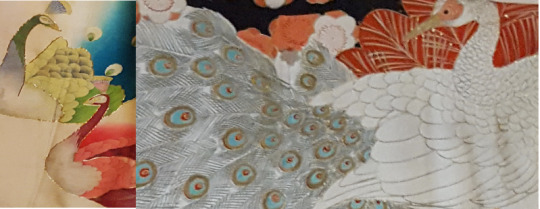
Peacocks (孔雀) - Kujaku
Rarity: Uncommon
Seasons: All
What isn’t there to love about the enigmatic bird that is the definition of luxury and showing off? Peafowl have been farmed in Asia and around the world for centuries, as they’re surprisingly easy to care for and they don’t need to be killed to harvest their luxurious feathers! The male peafowl grows an entirely new set of tail feathers each year for mating purposes and sheds them at the end in order to grow an even larger set the following year. These feathers have become synonymous with beauty and power.
Although known for their beauty, they are actually associated with Kanon, the Buddhist goddess of mercy for an entirely different reason: they eat snakes! Peafowl have long been kept for their ability to viciously kill snakes, especially poisonous ones, and protect their owners from harm. Because of this, they are symbols of protection and divinity ^^
50 notes
·
View notes
Text




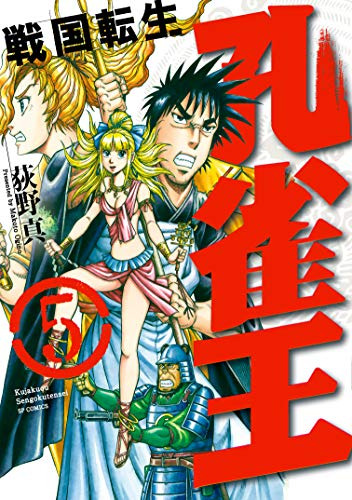
Kujakuou Sengokutensei[孔雀王 戦国転生]: Peacock King Warring States Reincarnation
0 notes
Photo

孔雀 KUJAKU
Kyowasuisan
47 notes
·
View notes
Audio
Kujaku Maihime by Mamiko Aso & Captain (1985)
3 notes
·
View notes
